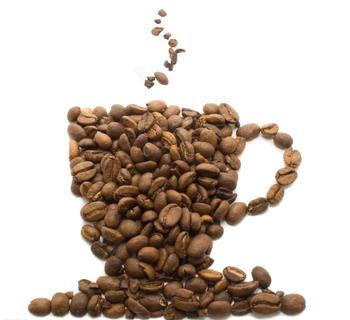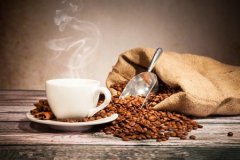What are the characteristics of coffee? what is the attractive charm of coffee?

All the colors, aromas and tastes of coffee are characteristic of the chemical changes that occur in the green beans after roasting.
Bitterness: == Caffeine, one of the basic taste elements of coffee
Acidity: == Tannin, coffee basic taste element II
Strong: == Coffee is strong. Aromatic and mellow.
Sweet taste: When the sugar in the coffee beans is partially roasted, the rest is sweet.
Aroma (coffee aroma):== Fat in coffee beans. protein. Sugar is an important source of aroma.
Coffee is attractive:
What is the attraction of coffee? It has the right sour bitterness, fragrant alcohol and caffeinated charm.
Alcohol or tobacco can be intoxicating and stimulating, just as caffeine can be exciting.
Caffeine, due to the stimulation of the central nervous system or muscle function, can make muscle fatigue recovery, work efficiency, with a sober effect can make the mind lively and sensitive.
There is also asthma caused by stimulation of sympathetic nerves, which can inhibit the excitation of parasympathetic nerves.
Other coffee also has the effect of helping digestion, especially when eating meat, gastric juice secretion, promote digestion, prevent gastroptosis. Because caffeine breaks down fat, Westerners must want a cup of coffee after eating high-calorie foods.
What is the attraction of coffee? It has the right sour bitterness, fragrant mellow, caffeinated charm.
Alcohol or tobacco can be intoxicating and stimulating, just as caffeine can be exciting.
Caffeine, due to the stimulation of the central nervous system or muscle function, can make muscle fatigue recovery, work efficiency, with a sober effect can make the mind responsive.
There is also asthma caused by stimulation of sympathetic nerves, which can inhibit the excitation of parasympathetic nerves.
Other coffee also has the effect of helping digestion, especially when eating meat, gastric juice secretion, promote digestion, prevent gastroptosis. Because caffeine breaks down fat, Westerners must want a cup of coffee after eating high-calorie foods.
Osteoporosis is not a women-specific disease, but it occurs mostly in women. Factors contributing to osteoporosis include calcium and protein intake, smoking, exercise habits, age and weight. To gain insight into the relationship between caffeine intake and osteoporosis, researchers must carefully grasp each variable.
A 1994 Barrett Connor study found that caffeine intake affected bone density reduction only in women who were restricted to a glass of milk a day during adulthood. According to the study, and as a rule of thumb, coffee only indirectly causes calcium imbalance-for example, some women substitute it for calcium-rich beverages.
Barger-Lux and Heaney concluded from a 1995 analysis of data from 190 women that "one cup of milk provides enough calcium to offset the negative effects of eight cups of caffeine...," underscoring the fact that caffeine is not a high risk factor for osteoporosis, and that insufficient calcium intake is the primary cause, as well as secondary factors such as caffeine.
A 1981 Harvard University report suggested that drinking too much coffee could lead to pancreatic cancer. However, at least seven major studies have since failed to confirm this, so the researchers retracted this conclusion. Several other studies have failed to prove a link between coffee drinking and breast cancer. Heavy coffee consumption appears to reduce the risk of colon cancer, with people who drink at least five cups of coffee a day 40 percent less likely to develop colon cancer than non-coffee drinkers, according to a Boston University study. (FromNewYorkTimes‘September13,95‘)
Coffee has the effect of eliminating garlic flavor, but also contains enamel, so after tasting garlic dishes, coffee is an indispensable drink.
A 1980s study found that men who drank five or more cups of coffee a day for long periods of time were more likely to suffer from heart disease. But recent studies have found that women who drink less than five cups of coffee a day don't have an increased risk of heart disease, and women who drink more than six cups a day don't seem to have an increased risk of heart attack.
Coffee also has a deodorizing effect. The residue of ground coffee brewing is dried in a container, placed in the refrigerator, or in a shoe box as a deodorizing agent. Sprinkle it in an ashtray to eliminate tobacco smell.
Coffee can also be used to hide flavor. For example, instant coffee is dissolved in boiling water, so that its taste can be more sweet and delicious meat dishes.
Fragrant coffee is a refreshing drink, and the latest research also found that drinking a few cups of coffee a day can prevent gallstones.
Harvard University researchers found that men who drank two to three cups of coffee a day had a 40 percent lower risk of developing gallstones than non-coffee drinkers, while men who drank four or more cups of coffee a day had a 45 percent lower risk of developing gallstones, the Journal of the American Medical Association reported. However, caffeine-free coffee can not have this effect, only caffeinated coffee, in order to stimulate gallbladder contraction, and reduce cholesterol in bile easy to form gallstones. As for the reason for the effect of coffee, it is still unclear, and other beverages such as tea and cola, which also contain caffeine, cannot achieve the same effect because the caffeine content is lower than coffee.
Dr. Leitzman, who led the study, said: "I wouldn't really recommend drinking coffee to prevent gallstones, but it's okay to keep drinking coffee because coffee doesn't cause any major diseases." He said the findings should also apply to women.
Cholelithiasis is mainly formed by cholesterol, and lack of exercise, greasy diet or excessive weight are the main causes.
Important Notice :
前街咖啡 FrontStreet Coffee has moved to new addredd:
FrontStreet Coffee Address: 315,Donghua East Road,GuangZhou
Tel:020 38364473
- Prev

Coffee culture and common sense of coffee culture all over the world
When Europeans first came into contact with coffee, they called the seductive drink Arabian wine, and when conservative Catholics cursed coffee as the devil's drink, they never thought of what a precious thing they inherited from the pagans. As the first region in the world to drink and produce coffee, Arab coffee culture is like it.
- Next

Introduction to the composition of coffee what are the ingredients of coffee beans?
Caffeine is the most eye-catching of all the ingredients in coffee. It is a kind of phytoxanthin (animal muscle component). It has the same properties as theobromine contained in cocoa, green tea contains the same theophylline, and the percentage of reduction after baking is very small. Caffeine has a very extensive effect. It will affect various parts of the human brain, heart, blood vessels, gastrointestinal tract, muscles and kidneys, and the right amount of caffeine will.
Related
- Beginners will see the "Coffee pull flower" guide!
- What is the difference between ice blog purified milk and ordinary milk coffee?
- Why is the Philippines the largest producer of crops in Liberia?
- For coffee extraction, should the fine powder be retained?
- How does extracted espresso fill pressed powder? How much strength does it take to press the powder?
- How to make jasmine cold extract coffee? Is the jasmine + latte good?
- Will this little toy really make the coffee taste better? How does Lily Drip affect coffee extraction?
- Will the action of slapping the filter cup also affect coffee extraction?
- What's the difference between powder-to-water ratio and powder-to-liquid ratio?
- What is the Ethiopian local species? What does it have to do with Heirloom native species?

